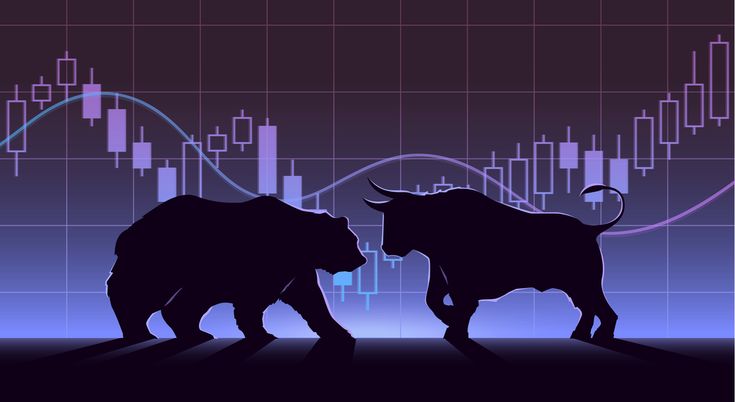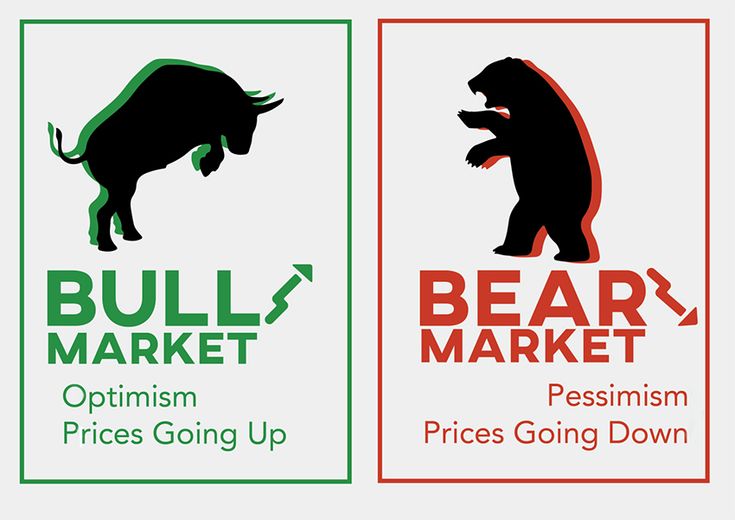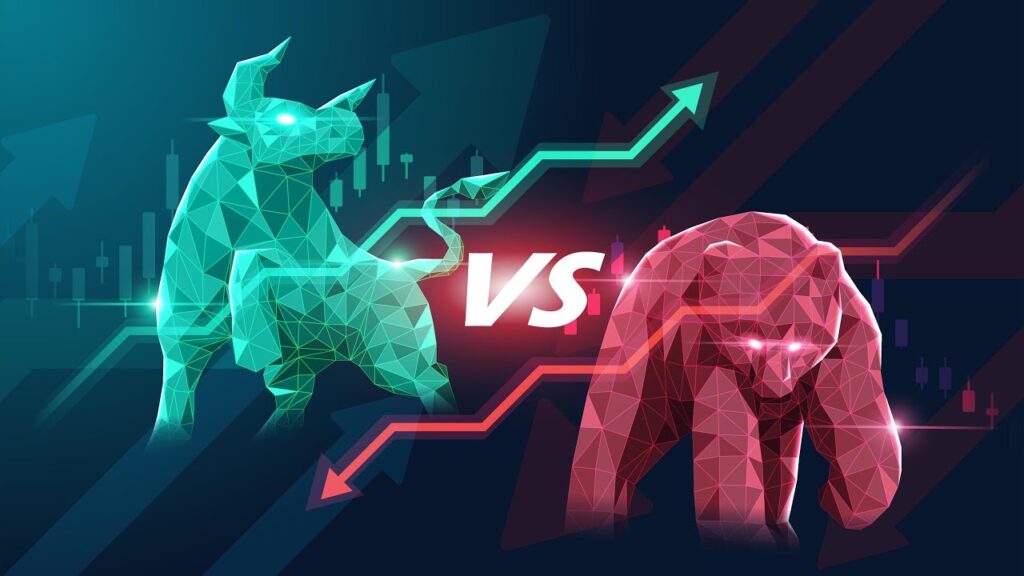
Introduction
Ever feel like the crypto market has a split personality?
One day, Bitcoin’s soaring, altcoins are doubling, and Twitter’s shouting “To the moon!” The next, prices are plunging, fear is everywhere, and everyone’s googling “should I sell my crypto?”
Welcome to the wild world of bull and bear markets—two sides of the same volatile crypto coin. If you’re wondering what these terms really mean (and how they impact your wallet), you’re in the right place.
Let’s break it down together—minus the Wall Street jargon and plus a whole lot of real talk.
What Are Market Trends in Crypto?
Market trends in crypto reflect the overall direction that prices are moving in over time. Sounds simple, right?
But here’s the kicker: these trends are driven not just by charts and numbers, but also by human emotion—greed, fear, hype, hope.
Why Trends Matter in Crypto
Understanding trends is like knowing the weather before planning your trip. If it’s stormy (bear market), you prep for rain. If it’s sunny (bull market), you pack the shades.
The Psychology Behind Market Movement
Markets are emotional rollercoasters. In bull runs, people feel invincible. In bear runs, they panic and sell at a loss. Recognizing this psychology helps you make rational decisions when others are acting out of emotion.
Bull Markets Explained
Defining a Bull Market
A bull market is a period of rising prices, typically marked by optimism, strong demand, and growing investor confidence.
🚀 Think of it as the “summer” of the crypto calendar—everything’s blooming.
Common Traits of a Bull Market
- Rising asset prices over months
- High trading volumes
- FOMO (Fear Of Missing Out) all over Twitter
- Increased media coverage and retail interest
Historical Crypto Bull Markets
- 2017: Bitcoin hit $20k, altcoins exploded.
- 2021: DeFi, NFTs, and meme coins took center stage.
Every bull run has its own flavor—but the hype? Always intense.
Bear Markets Explained
Defining a Bear Market

A bear market is the opposite—a sustained downtrend in prices, often triggered by fear, bad news, or global events.
🐻 It’s the “winter” of the crypto world—cold, tough, and quiet.
Typical Signs of a Bear Market
- Steady price drops over weeks or months
- Lower trading volumes
- Negative news cycles
- Capitulation (everyone gives up and sells)
Notable Crypto Bear Markets
- 2018–2019: Bitcoin dropped from $20k to $3k.
- 2022: Terra crash, FTX collapse, and Bitcoin tumbled below $16k.
Bear markets are brutal—but also full of opportunities.
How to Identify Market Cycles
Market Sentiment Indicators
- Fear & Greed Index: Are investors panicking or euphoric?
- Volume trends: Bull = buying; Bear = dumping.
On-Chain and Technical Indicators
- Moving Averages
- RSI (Relative Strength Index)
- Exchange inflows/outflows
- Whale activity
Knowing the tools = knowing the trend.
Investor Behavior in Each Market
FOMO in Bull Markets
People chase green candles and hop into tokens without research. It’s a party—until the music stops.
Panic Selling in Bear Markets
When fear sets in, even long-term holders sell at a loss. But remember: smart money buys when others panic.
Strategies for Navigating Bull Markets
Riding the Wave with Caution

- Ride trends, but don’t get greedy.
- Avoid YOLO-ing into every meme coin.
When to Take Profits
- Set profit-taking levels.
- Follow the 80/20 rule: Take 80% profits, let 20% ride the wave.
Strategies for Navigating Bear Markets
Staying Calm During Crashes
Breathe. Zoom out. Bear markets don’t last forever.
Dollar-Cost Averaging (DCA)
Investing small, consistent amounts can reduce the impact of volatility and build wealth long term.
Bull vs Bear: Key Differences at a Glance
| Feature | Bull Market | Bear Market |
|---|---|---|
| Price Trend | Upward | Downward |
| Investor Emotion | Optimism, Greed | Fear, Despair |
| Media Coverage | Positive, Hype-Driven | Negative, Doom-Filled |
| Trading Volume | High | Low |
| Volatility | Often Increased | Sometimes Flat or Choppy |
| Best Strategy | Take profits, avoid hype buys | DCA, build positions |
Common Mistakes Traders Make in Each Market
- In bull markets: Overleveraging, buying tops.
- In bear markets: Panic selling, ignoring fundamentals.
Stay rational, not emotional.
How Long Do Bull and Bear Markets Last?
- Bull markets: Usually 1–2 years
- Bear markets: Often 6–18 months
But in crypto, cycles can move fast. Stay nimble.
Real-Life Examples and Lessons Learned
The 2017 Bull Market
Bitcoin soared. ICOs exploded. Greed ruled. Then came the crash.
Lesson: What goes up can come down—hard.
The 2018–2019 Bear Market
People left crypto. Prices tanked. But foundations were quietly built (Ethereum 2.0, DeFi protocols, etc.).
Lesson: Bear markets are builders’ markets.
The 2021 Bull & 2022 Bear Cycle
Memecoins, NFTs, and metaverse tokens rallied. Then came inflation fears and collapses.
Lesson: Never put all your eggs in one token.
What Influences Market Shifts?
Macroeconomics & Regulations
- Interest rates
- Global inflation
- Crypto legislation
Media, Hype, and Sentiment
Elon tweets, SEC lawsuits, or Reddit hype can flip the market overnight.
Tools to Stay Ahead of Market Trends
News & Social Media Analytics
- Twitter/X
- CryptoPanic
Technical Analysis Platforms
- TradingView
- Glassnode
- CoinMarketCap
Knowledge = Power in this game.
Conclusion
Bull markets make you money. Bear markets make you rich—if you know what you’re doing.
Understanding the difference between bull and bear markets isn’t just “nice to know.” It’s your survival guide in the crypto jungle. Whether you’re buying dips or riding pumps, staying grounded in facts and strategy will keep you one step ahead of the crowd.
Remember, crypto is a marathon, not a sprint. Know the trends. Ride them wisely. 🌊
FAQs
1. Can you make money in a bear market?
Absolutely! With strategies like DCA, staking, and building strong positions, bear markets offer great opportunities.
2. How do I know if a bull market is ending?
Signs include declining volume, over-leveraged trades, and hype without substance. Always look for trend reversals.
3. Is it better to HODL during a bear market?
If you’re invested in strong projects, yes. HODLing can pay off long-term—just avoid emotional selling.
4. How do regulations affect market trends?
Major crypto regulations often trigger price drops (initially), but clarity can fuel long-term bull runs.
5. Should I sell everything in a bear market?
Not unless you have to. Panic selling locks in losses. Evaluate your holdings and consider adjusting—not abandoning—your strategy.